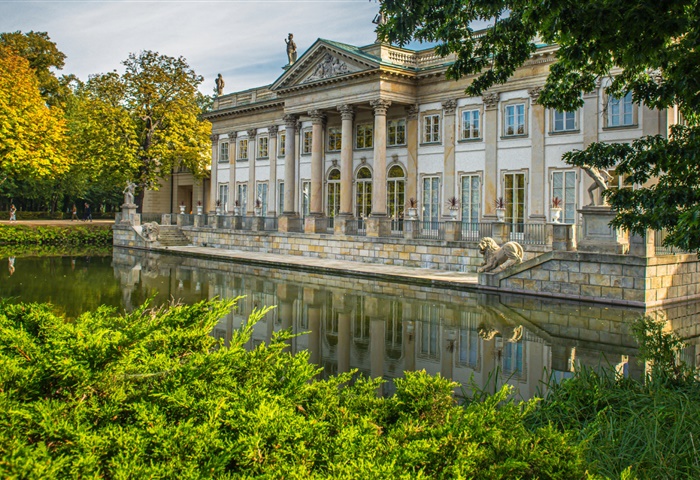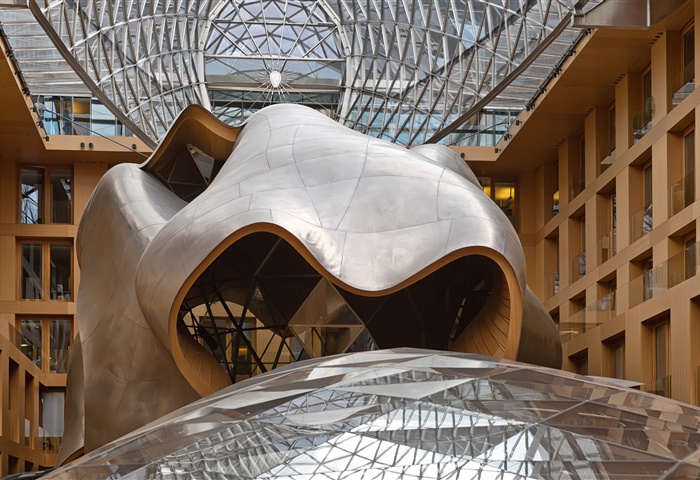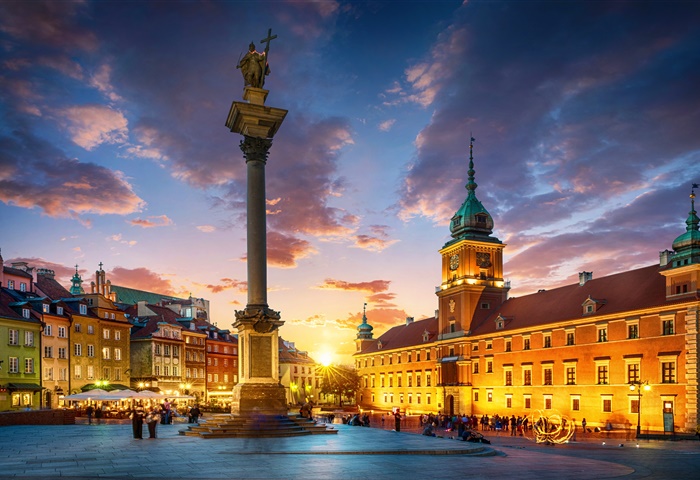
Historical Architecture - The Krasiński Palace
The Krasiński Palace is one of the most magnificent masterpieces of Baroque architecture in Warsaw and a significant element of Poland's cultural heritage. Located in the Old Town amidst picturesque tenement houses, the palace stands out with its majestic appearance and rich history.
The location of the Krasiński Palace adds an extra charm to it. Situated in close proximity to the Old Town Square, it blends into the picturesque landscape of the historic center of Warsaw. Surrounded by the greenery of the park, it creates a harmonious space, perfect for strolls and contemplation.
The architecture of the palace is the quintessence of Italian and French patterns. The building exudes elegance and grandeur, characteristic of that period's richness in decoration. The beautiful, expansive French garden, notable for its geometric layout and regular arrangement of paths, has awed everyone who had the pleasure of visiting the Palace. Designed as a three-story building, divided into a ground floor, a representative floor, and a mezzanine, the façade of the main body exhibits a nineteen-axis arrangement with avant-corps. The representative interiors, symmetrically arranged in the central part, were connected by a staircase. The architectural concept was reminiscent of Italian villas, while emphasizing the ancient origins of the Krasiński family.
Decorative details, such as loggias, pilasters, and avant-corps, incorporated into the façade, created an impressive whole. The interior arrangement and façade details referred to the myth of the ancient origin of the Krasiński family, descending from Marcus Valerius Corvinus.
The history of the Krasiński Palace is as fascinating as its architecture. It was erected between 1688–1699 according to the design of Tylman van Gameren. It was meant to be a dazzling and luxurious building, showcasing the prestige of the Krasiński family. It was initiated by Jan Dobrogost Krasiński (1639–1717), voivode of Płock and starost of Warsaw, who wanted his building to surpass in grandeur the emerging Wilanów Palace of King Jan Sobieski.
After the death of Jan Dobrogost, the palace remained in the Krasiński family for several decades until on December 5, 1765, it was purchased by the state authorities, named the Palace of the Commonwealth, and designated as the seat of the Crown Treasury Commission. Events of the past years left the palace and garden in a very poor state. Subsequent years brought several attempts at renovation and reconstruction, but in 1782 the building was completely destroyed by fire. It was restored according to the design of Dominik Merlini the following year. Later, the palace was used as a venue for state-level meetings, then as the seat of offices. It was also a time of various building modernizations, which stripped it of its former nobility. During World War II, the Palace was bombed and became a ruin. Its reconstruction began in 1948 and lasted 13 years. In 1961, the Palace was handed over as the seat of the National Library's most valuable collections, which were saved during the war. From 2014 to 2016, the Palace underwent extensive revitalization.
Currently, the Krasiński Palace functions as the Museum of Independence, housing unique exhibits related to Polish history. It is a place where the past and present intertwine into an unforgettable story, reminding us of the national heritage and architectural beauty that has survived many generations.





